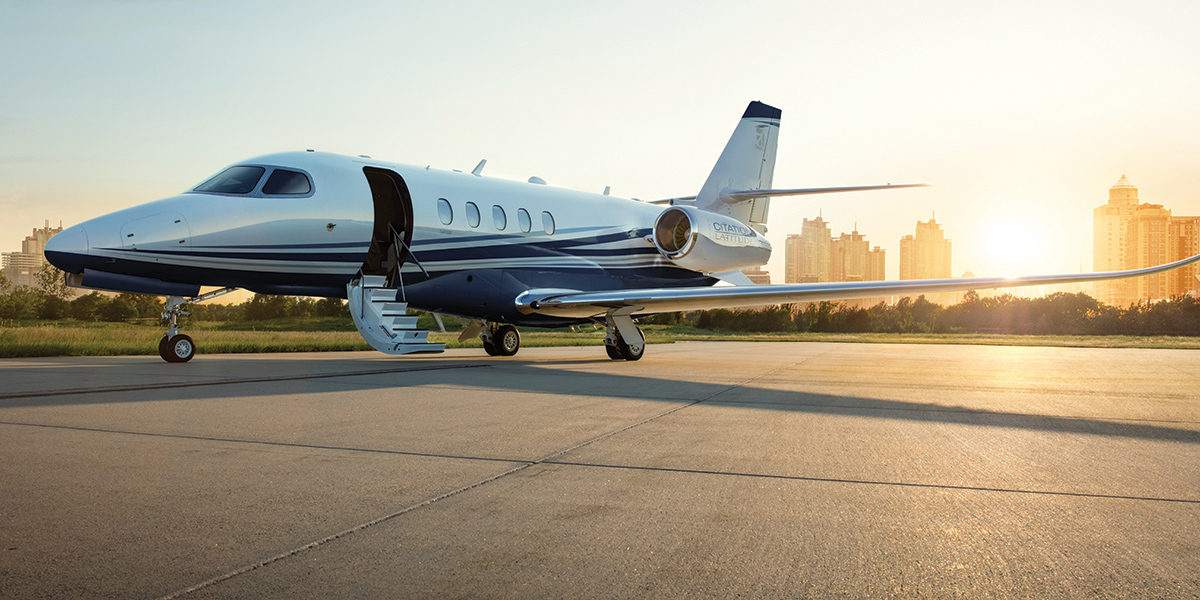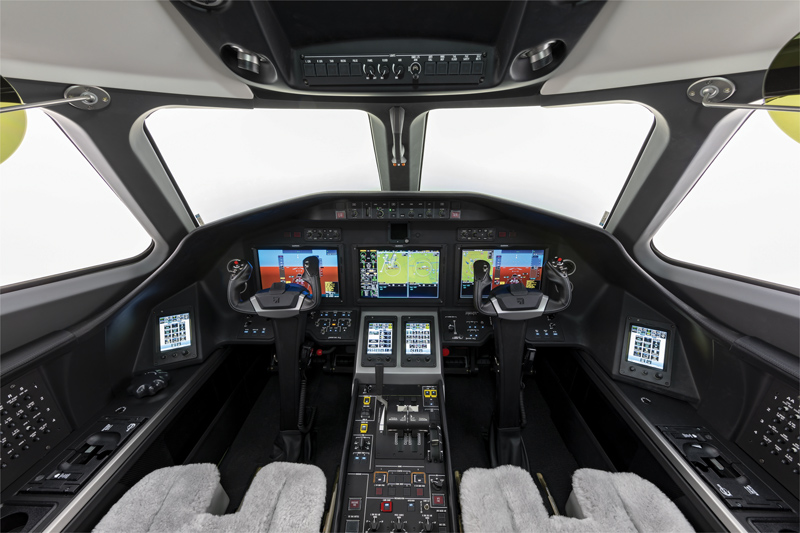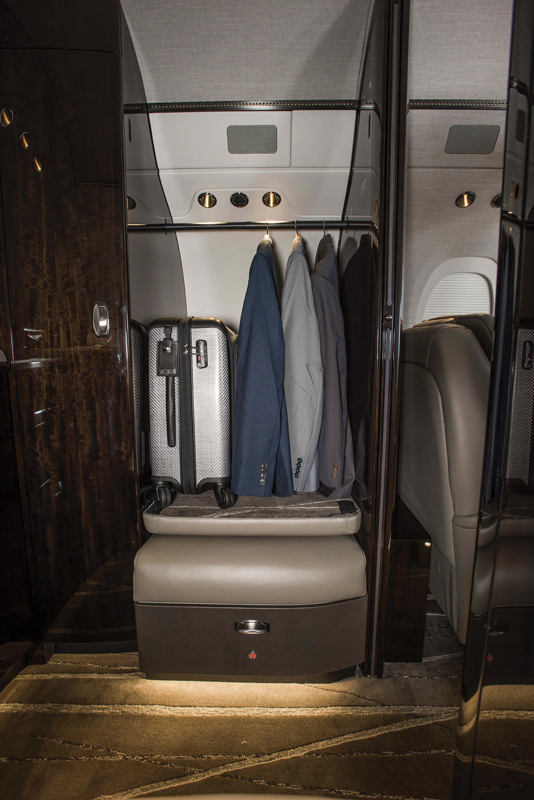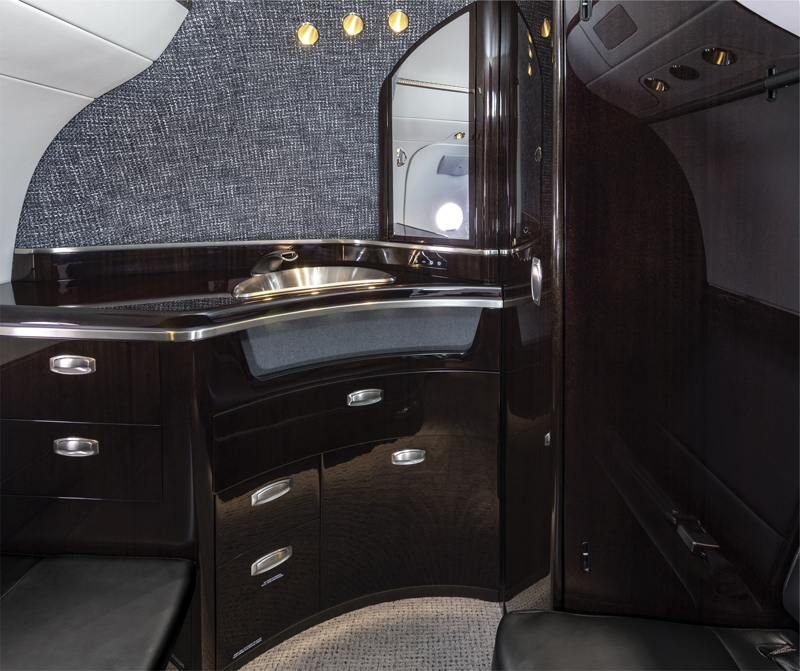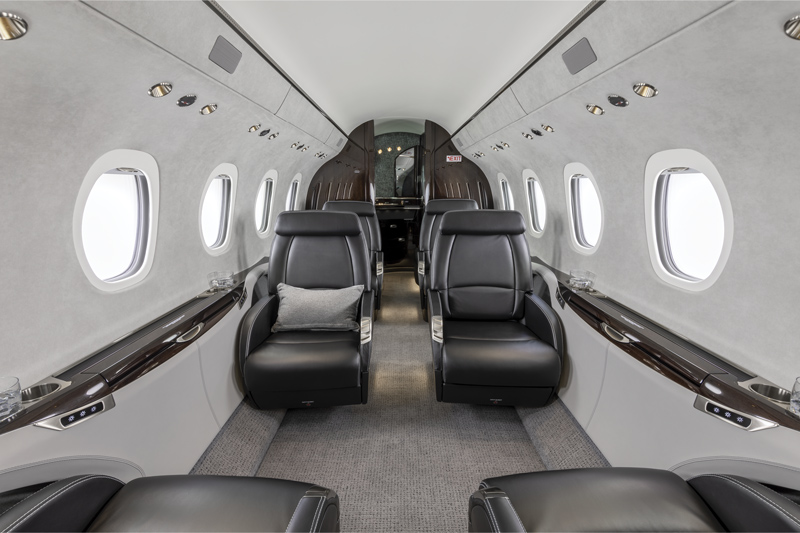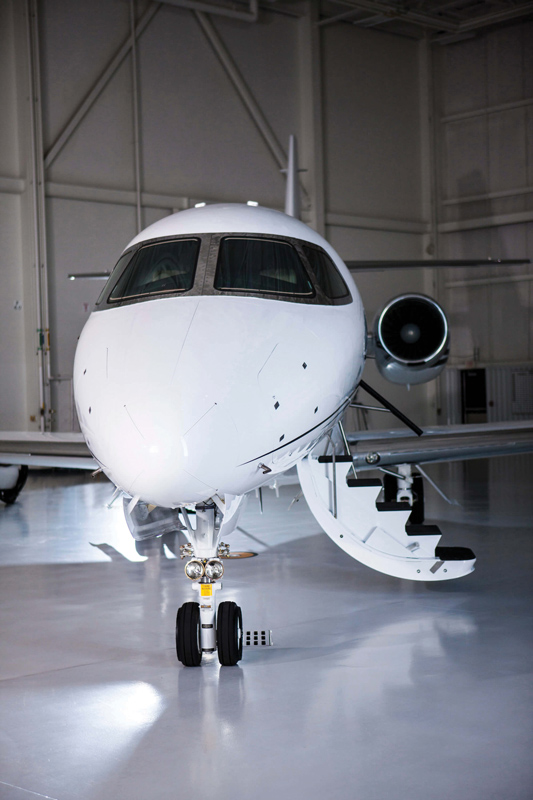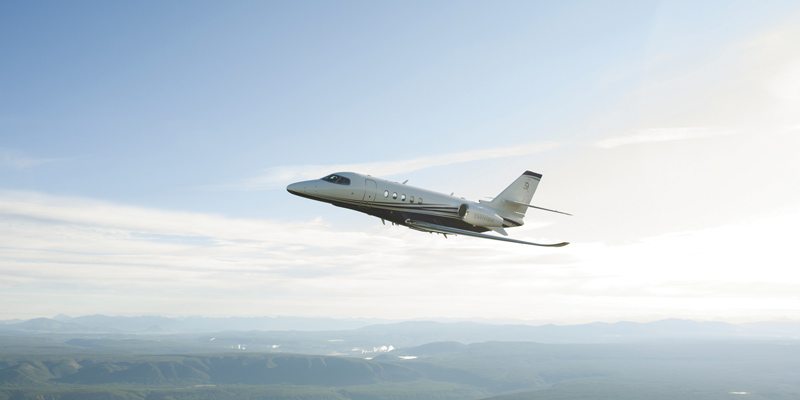Comfortable and safe flight
Due to its technological development and dimensions, this business jet is considered one of the most appreciated in its category.
Arriving at the planned site for business or vacation, regardless of time or day, is more comforta-ble aboard the Cessna Citation Latitude, the best-selling mid-size business jet.
With a maximum range of 2,700 nautical miles carrying four passengers, it can take off from Mexico City and cross the United States and Canada; to the south of the American continent, it can land in northern Brazil. In the United States, it is possible to make a direct flight from Los Angeles, California, to New York City, covering more than 2,485 miles, equivalent to five hours in the air.
The experience starts with the opening of the electronically operated door: just press a button from the inside and it will open automatically, with its 30 inches width and integrated stairs. Once inside, the spacious passenger cabin exceeds the expectations of any mid-size jet, being the largest in its category, guaranteeing maximum comfort during the trip.
The wide floor and a height of 6 ft. allow free mobility for travelers during the trip; in the case of a business transfer, executives can keep their personal mobile devices connected via internet and continue productivity by being in contact with the office on the ground. Another benefit of having a low altitude cabin provides a feeling of flying at a lower altitude (5,950 ft.), when actually the aircraft is traveling at a higher elevation (45,000 ft.).
There is also access to the class-leading luggage compartment, spacious enough to accommodate travelers' personal belongings. Interiors are offered in seven basic shades, with the option to be customized in a combination of leather, wood and fabric tones, all finely crafted; materials can be chosen from a wide range of colors and textures, under the guidance of Cessna's design team.
Taking care of travelers' health
Due to the health situation in recent years, the aim is to preserve the health and safety of passengers by sanitizing the cabins. The partial air recirculation system to keep the air clean works by bringing fresh air from outside into the aircraft and passing it through the engines that compress and heat it, killing bacteria and germs. When the air is cooled to cabin temperature, it enters through the distribution ducts and exits the aircraft at the aft, via the exhaust valves; the entire air volume exchange takes two minutes.
Another Cessna option for interior air purification is the installation of a HEPA (high-efficiency particulate trap) filter, which mixes the new air entering the cabin, as well as the possibility of installing an ionization system that includes a component mounted in the air duct that works electronically, producing positive and negative ions from hydrogen and oxygen molecules in the water vapor in the air; the ions cluster around germs, odors and other particles in the cabin air. The natural reaction deactivates pathogens and causes odors to be dissipated.
All three options are equally effective, say Cessna, and the choice depends on the aircraft owner's preferences. Because some of these devices are tied to the manufacture of the aircraft, the equipment is often not easily interchangeable once installed.
Proven systems
The Citation Latitude's navigation modules are tested with the thousands of flight hours of awarded Cessna Citation models. Add to that the constant intelligent innovation of its systems, combined with class-leading performance. Equipped with Garmin G5000 avionics, all information is available on the NextGen-compatible touchscreens, simplifying activity for pilots, who are in control of the aircraft's navigation, traffic, and surveillance and communications modules.
The integrated flight management system provides comprehensive navigation and route planning, as well as data on the jet's en-route, takeoff and landing performance. Because of the clean wing design, it does not require a large amount of space for lift; approximately 3,580 ft. runway is required.
Everything under control
All flight indications are presented on three 14-inch displays, which can operate independently or as a main display. The displays also operate in multi-panel mode, with one MFD (multi-function display) and two additional panels. Pilots have the option to customize the displays through the touchscreen control panels, organizing and prioritizing the displayed references.
While in flight, Garmin's Synthetic Vision Technology (SVT) system provides a virtual reality view of weather conditions, obstacles, traffic and runways. Using the path modification database, pilots get a true picture of what lies beyond the nose of the aircraft. Garmin SVT enhances situational awareness by creating a virtual representation of the group and characteristics of obstacles and traffic, even in conditions where Instrument Flight Rules (IFR) or Visual Flight Rules (VFR) apply at night.
The Citation Latitude is authorized to use LinxUs and LinxUs Air, which work with the jet's Central Diagnostic Maintenance System (CDMS), monitoring the aircraft 100% for potential failures. In the event of a problem, it provides real-time actionable responses, resulting in faster action to get back in the air once the issue is resolved. For increased flight safety, lightweight composites were incorporated into the fuselage manufacturing process to protect the nose radome and fairings.
|
Dimensions |
|
|
Length |
19.0 m / 62 ft 3 in |
|
Height |
6.4 m / 20ft 11 in |
|
Wingspan |
22.04 m / 72 ft 4 in |
|
Cabin interior |
|
|
Length |
6.60 m / 21 ft 9 in |
|
Height |
1.80 m / 72 in |
|
Width |
1.96 m / 77 in |
|
Passengers |
9 |
|
Performance |
|
|
Engines |
Pratt & Whitney PW30601 |
|
Maximum speed |
987 km/h / 613 mph |
|
Maximum range |
2,700nm |
Text: ± Photo: Textron Aviation

